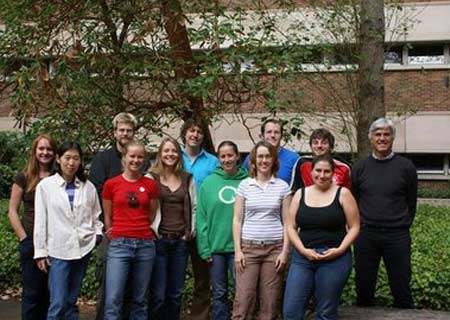A new mouse based study claims that stress-evoked alterations in circuits that control serotonin in particular potions of the brain could lead to a low mood and a relapse in cocaine-seeking.
A familiar faith is that drug seeking is apparently adjusted by dopamine, a chemical nerve signal linked to encouraging and gratifying behavior. As per the experts, dopamine may still have a chief part. This is the reason as to why they were astonished to discover damaging effects of anxiety converging in a brain area i.e. the dorsal raphe nucleus, where nerve cells that utilize serotonin are plentiful.
These nerve cells apparently also propel to other structures discovered on either side of the brain i.e. the nucleus accumbens which are believed to play functions in feeding and drug addiction. Serotonin is a chemical nerve signal which is supposedly connected to wake and sleep cycles, mood, anger, status and aggression.
“The impetus for this research was our interest in how stress alters the brain’s cell receptors and protein signals in ways that lead to mood changes, depression, anxiety, and drug seeking,” commented, Dr. Michael Bruchas, acting instructor of pharmacology at the University of Washington (UW), who with Dr. Benjamin Land, a former UW doctoral student now in the Department of Psychiatry at Yale University.
In explaining their study, the experts mentioned that the dynorphin/kappa opioid system, discovered in particular brain cells could be triggered either through frequent stress or by giving a chemical that activates a receptor on the cells. Activation of this system generates what is known as conditioned place dislike in mice. They evade smells, places or tangible sensations akin to those present during a disturbing experience. The study implies that this reaction could be interceded by the stress-evoked release of dynorphins, the ‘feel bad’ brain signals.
For mice, meeting a bossy male mouse could be intimidating. Dr. Land compared the stressfulness of this condition to sitting in a classroom with the schoolyard bully. Facing an aggressor, mice could allow social defeat by liftting their paws in an ‘I give up’ pose. If the lab mice were given cocaine earlier and are refraining now, they may feel like having the drug again.
Land mentioned, “Stress appears to be a motivator for the relapse in drug seeking. They feel crummy so they go where there might be something that will make them feel okay again.”
They embark on the location where the drug was available in the past, an action experts name as cocaine place preference. The study had earlier suggested that an activated dynorphin/kappa opioid receptor system halted the discharge of dopamine and thus made the mice feel unhappy enough to lead to loathing. Nevertheless, even mice bred to be dopamine-deficient still reacted with aversions. When experts inactivated the kappa opioid receptors caught up in the serotonin system in the dorsal raphe nucleus i.e. the serotonin-abundant region of the brain, they were apparently able to obstruct both the aversive reactions and the stress-induced restoration of cocaine-place preference.
Mice that had their kappa opioid receptors hereditarily ‘knocked out’ did not develop aversive reactions to chemical triggers. After the experts heritably replaced these misplaced receptors in the dorsal raphe nucleus of the brain, the mice reacted to the cause with place aversion. Nevertheless, the experts discovered that genetically installed, mutated receptors that can’t turn on a brain protein known as p38 MAPK was apparently not able to incite aversive responses.
The experts concluded that triggering of the kappa opioid receptor, either pharmacologically or by stress-evoked release of dynorphins, may adjust a serotonin system through projections from the dorsal raphe nucleus of the brain to further portions of the brain, the nucleus accumbens. Theirs is claimed to be one of the first tests into sources of the serotonin system projections and how this link is controlled by stress-evoked mediators. This pathway, provoked by dynophins discharged during stress, might re-ignite snuffed out drug-seeking behaviors by waning the serotonin tone of the nucleus accumbens.
The experts anticipate that upcoming work on how this pathway functions may offer additional insight into the brain mechanisms linking stress, depression, and addiction.
The study was published in the Proceedings of the National Academy of Sciences.

